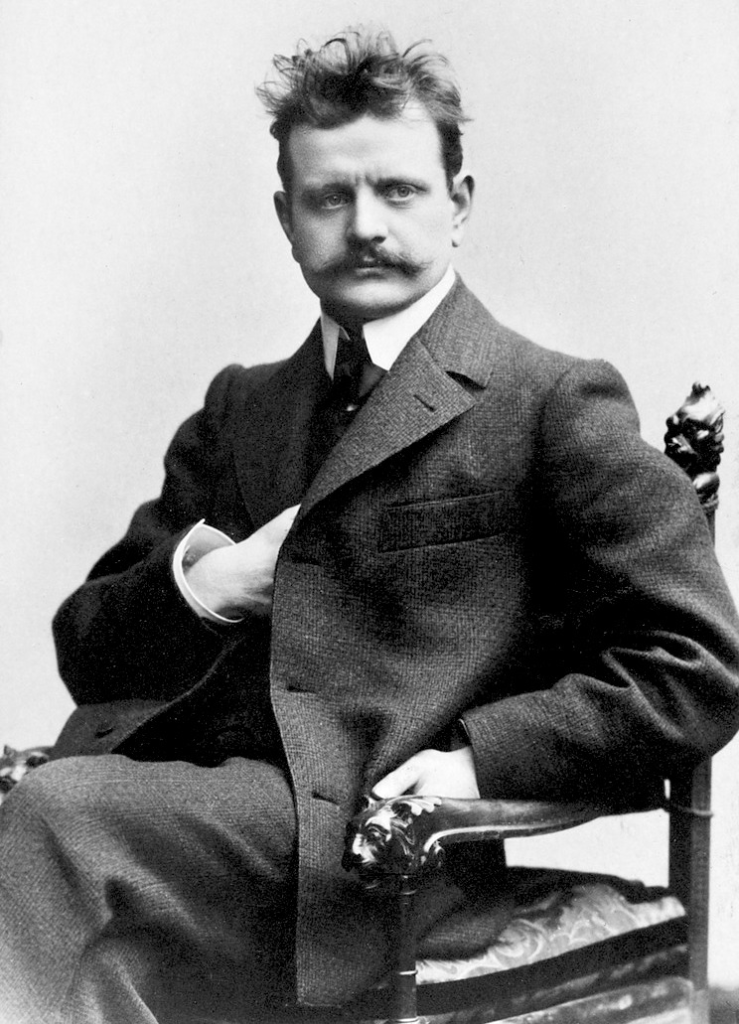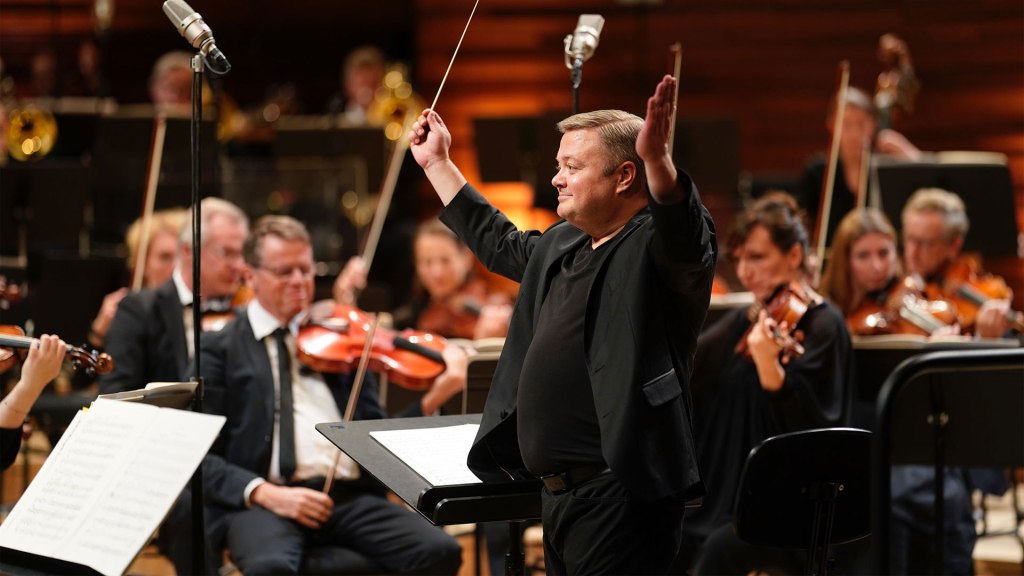The Orchestre Philharmonique de Radio France under conductor Mikko Franck have been performing a complete Sibelius symphony cycle on successive evenings at Maison de la Radio, Paris. This evening’s programme brought together the final three: symphonies 5, 6 and 7.
Jean Sibelius
The evening began with Symphony no. 5, possibly Sibelius’s best known. It was commissioned by the Finnish government in honour of the composer’s fiftieth birthday on 8 December 1915, which had been declared a national holiday. He wrote the original score from 1914 to 1915, revising it twice before it reached its final form in 1919.
Written in E-flat major, it is in three movements, each of which evoke the Nordic landscape. Whilst writing the symphony in 1915, Sibelius noted in his diary, “Today at ten to eleven I saw sixteen swans. One of my greatest experiences! Lord God, what beauty! They circled over me for a long time. Disappeared into the solar haze like a gleaming silver ribbon.” This inspired him to write what has become known as the ‘swan theme’ which forms the dramatic climax of the final movement. The orchestra performed it brilliantly under Finnish conductor Mikko Franck (like many other Finnish conductors, a pupil of Jorma Panula) who planned this series of concerts for his final year as the orchestra leader.
Perhaps it was the thrill of the performance of the fifth symphony that led to the sixth seeming slightly lacklustre in comparison. It is of course a much more subdued and less dramatic composition than the fifth with much quieter moments. Even Sibelius himself wrote of the sixth, “Whereas most other modern composers are engaged in manufacturing cocktails of every hue and description, I offer the public pure cold water.” Whilst it was an enjoyable performance, and certainly not ‘cold water’, I would have preferred a little more dynamism.
Mikko Franck et l’Orchestre Philharmonique de Radio France
However, with the final piece of the evening, Symphony no. 7, the orchestra were back on fire. Notable for being a single movement symphony, it is one of the composer’s most remarkable achievements. Despite its complexity, it was played with great energy (the trombone theme was especially wonderful) and it provided the perfect ending to the evening and to the entire cycle. Mikko Franck was deservedly called back for numerous ovations.
Jean Sibelius: Symphony no. 5 in E-flat major, opus 82; Symphony no. 6 in D minor, opus 104; Symphony no. 7 in C major, opus 105.


